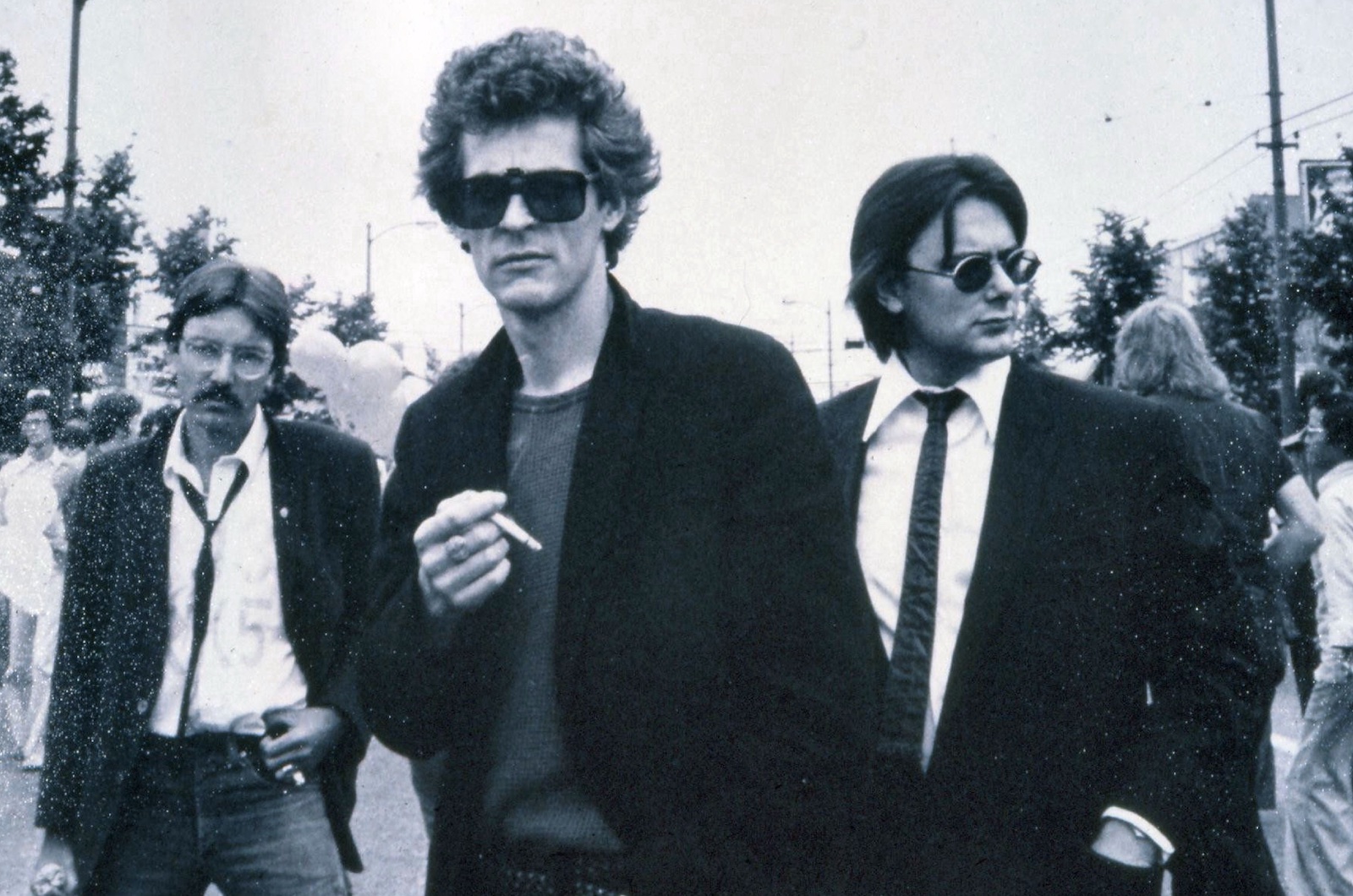Ouisi Bistro was a little Cajun and Creole restaurant on South Granville Street. For roughly 20 years, until it closed in 2019, it played host every Wednesday night to something like Vancouver’s postmodern Algonquin Round Table. David Wisdom was there the entire time. “Those were wonderful days,” he says. “I remember having some of the biggest laughs of my life at Ouisi’s. As far as my social life is concerned, they can’t be beaten.” Chuckling, the venerable CBC radio host, now 76, produces a photo, taken in 2007, of three figures sitting behind an impressive collection of empty wine and cocktail glasses in a cozy corner of the bistro. Instantly recognizable is Hard Core Logo author Michael Turner. Beside him is psychotherapist Sarah Lightbody. The dignified gentleman to her right is an internationally renowned artist and the subject of our conversation: Rodney Graham.
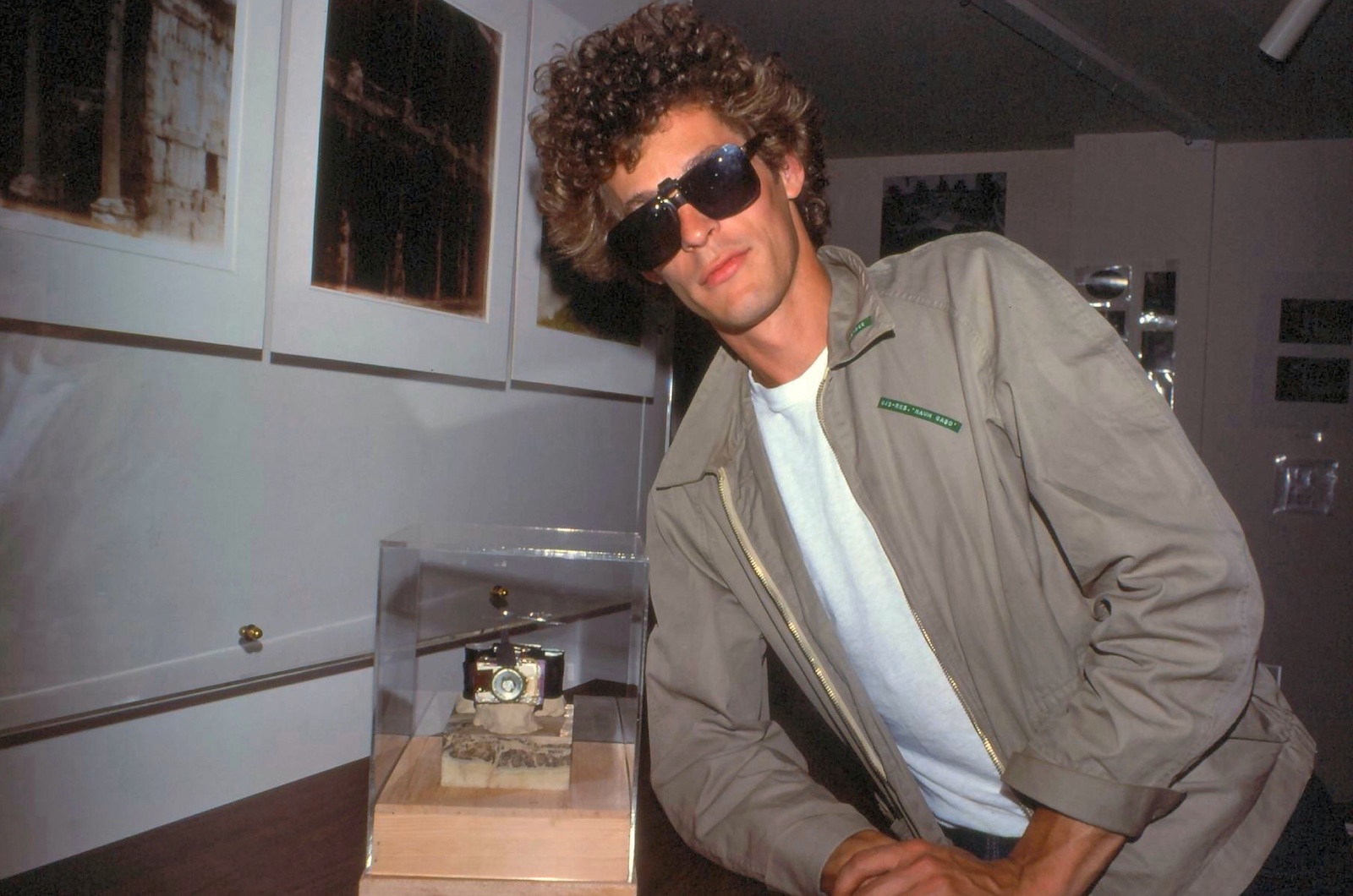
Rodney Graham at the Nova Gallery in 1979. Photo by David Wisdom.
An impressive cast of friends and acquaintances would come and go, but it was David Wisdom and Rodney Graham who inaugurated Wednesday nights at Ouisi’s, along with another buddy, artist Neil Wedman. There, bibulous conversation and wisecracks would serve as the crucible for Graham’s world-famous art. Wisdom remembers the time Graham idly proposed, after a few martinis, that he fancied covering himself in Popeye tattoos. Cut to 2018, and Graham’s characteristically deadpan photograph Tattooed Man on Balcony makes its debut at London’s Lisson Gallery, depicting the artist as an aging rocker leaning on the balcony rail of a Vancouver Special. “I realized that sitting around and having a big laugh was just part of the process of making his work,” Wisdom says. Tattooed Man would next make its way to the 303 Gallery in New York.
Wisdom and Graham were friends for over 50 years. After a lifetime of adventures together—Graham died in October 2022 at 73—few could boast a more intimate view of the man’s evolution from Kitsilano liquor store employee to global art star. No slouch himself as a photographer, Wisdom invited me into his Saltspring Island home to sift through some favourite pictures of his old pal, stretching back to their earliest days.

The business card designed in 1973. Photo by David Wisdom.
“Nineteen seventy-three,” Wisdom says, pulling up the first picture with a wry grin, “they put this business card together and decided to be filmmakers.” The card, appearing on his laptop screen, lists Graham, Ian Wallace, and Jeff Wall. These three men would later become central to the Vancouver School of photoconceptualism. In 1973, they were just starting out, with a nice-looking card but no business. A second image captures Ian Wallace at the UBC studios pointing a 16-millimetre camera at a nude figure covered with a blanket. Wisdom was the set photographer for this never-completed film—he still has the threadbare Mexican beach towel we can see beneath the model—and he was fascinated by this guy “Rod” Graham.
“There were drapes on this couch,” he begins, “and I remember watching him meticulously straightening the lines and thinking, Huh? This is crazy! But it was an insight into what it takes to be an artist. He was so precise, and he had such a vision of what things should look like. I came to understand art better through watching Rodney.”

Rodney Graham plays his Fender Telecaster with UJ3RK5 on the set for Jeff Wall’s The Destroyed Room. Photo by David Wisdom.
It’s not unreasonable to wonder if Wisdom was partly taken with Graham’s charisma. He’s a striking figure in a series of photos chronicling the early flush of local success. In 1976, he squats in the corner of his first solo show at the Pender Gallery. Three years later, this time at the Nova Gallery, young Rodney Graham is a statuesque, leonine figure with sharp features and a thrilling head of hair managed into precise misrule.
“He wasn’t interested in celebrity at all, being a celebrity, or hanging with celebrities. His friends were his old friends.”
“He was a very impressive- looking guy,” Wisdom says. “He had gone to Italy and his camera broke, so he made a pinhole camera with a milk carton or something, so the pictures were fuzzy but very beautiful and evocative.” Looking pleased with himself, Graham poses in yet another shot with the ad hoc camera. He’s gorgeous in a couple of black-and-white street images taken in the earliest days of the new wave outfit UJ3RK5, flanked by his bandmates Wisdom and Frank Ramirez. (“Gah, look at that collar,” Wisdom moans. “I didn’t have half the style.”)
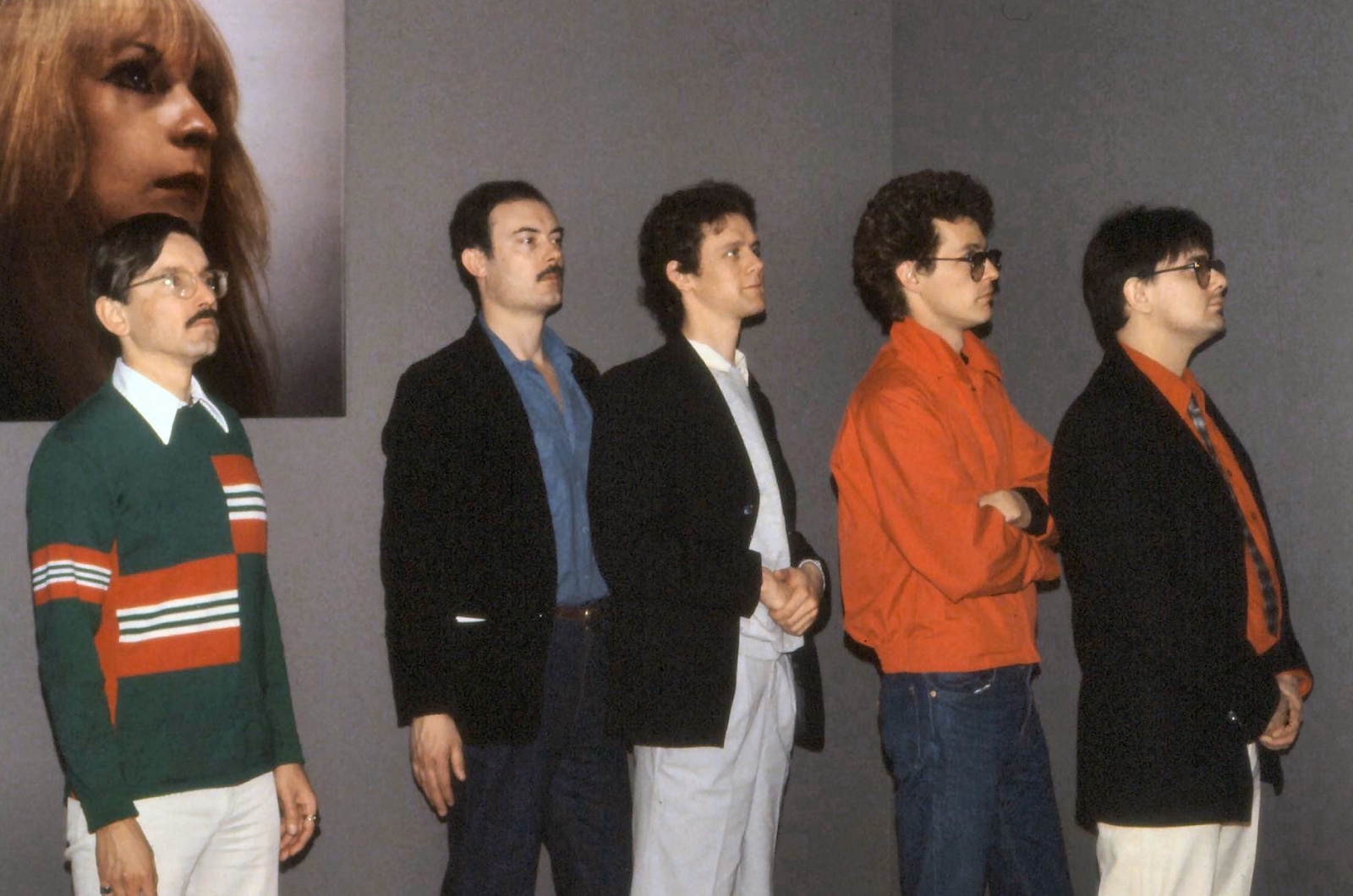
Frank Ramirez, Ian Wallace, Jeff Wall, Rodney Graham, and David Wisdom at Wall’s show in Victoria. Photo by Carole Goldsmith.
Like a small-scale prototype of Ouisi Bistro, UJ3RK5 is partly famed for its revolving door of soon-to-be-acclaimed figures such as author William Gibson, brutally cropped in one photo to reflect, presumably, his exceedingly short stint with the band. “He was only half in, yeah,” Wisdom says, laughing. Gibson made his mark nonetheless as the composer of “Bruce Lee’s Leathers,” a song Wisdom figures he has on a cassette somewhere. “It’s very Lou Reed. There was a lot of Lou Reed.”
UJ3RK5 finally settled into an eight-piece including, naturally, Jeff Wall and Ian Wallace. Photographs from a rehearsal at Wall’s Gastown studio in 1978 offer a clue to the band’s extraordinary provenance. In the foreground, Graham clutches his white Fender Telecaster. Behind him is the set for The Destroyed Room, the photocomposition that launched Wall’s career. That it’s so incidental to the picture is delicious. Not so delicious, in Wisdom’s estimation—as we peruse images of the two friends at their very last jam session, taken at Ian Wallace’s studio just a few years before Graham’s death—is the continuing perception that Rodney Graham’s music is incidental to his career as an artist.
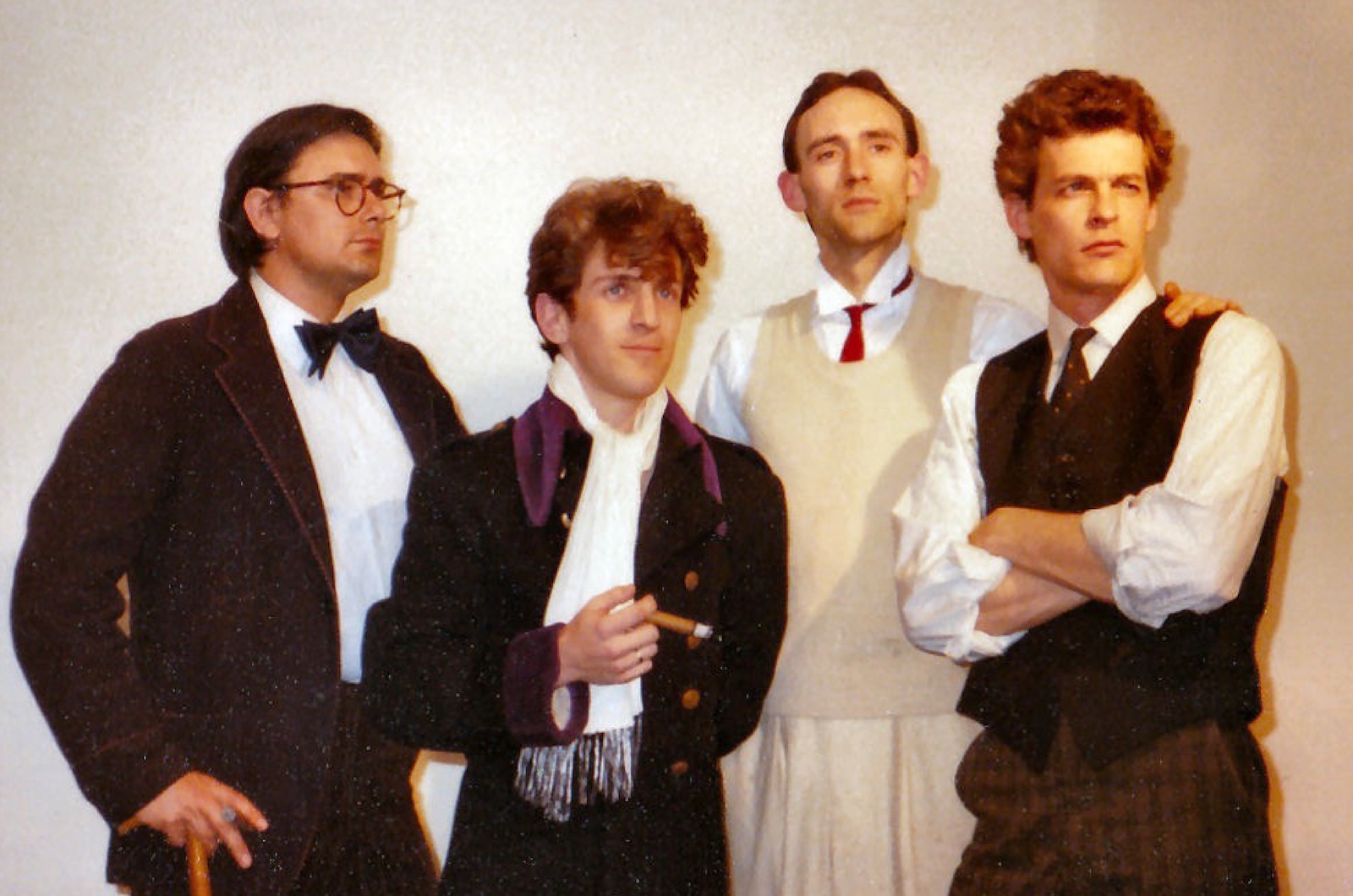
The Young Winstons.
“I know that Rodney took his music as seriously as he did all his other art,” Wisdom asserts. “It would seem like it’s a posture. But to Rodney, no. I know he practised guitar every day for at least an hour. He worked at it. And I think as a musician he’s very underrated. I love his music. I always have.” In turn, Graham was a voracious listener and fan. In the ’90s, he was a regular guest on Wisdom’s influential radio program Night Lines. Wisdom proudly shows off a couple of items of merch his friend designed for the show: a T-shirt based on an old cough syrup bottle and a sweater that appropriated the Old Spice logo. “Remember Nuggets? Garage rock? We knew all those songs really well. He wasn’t very interested in art rock at all. I don’t think he’d be listening to Philip Glass or Steve Reich. He’d know a lot more about the Monkees. He never liked the idea of highbrow, and he wasn’t at all interested in classical music.” With a devilish grin, Wisdom adds, “He said it wasn’t complex enough.”
In 1981, Graham cajoled Wisdom along with fellow UJ3RK5 member Colin Griffiths and producer Ron Obvious to contribute a track to an album being assembled by local promoter Bud Luxford. The problem? The record was already finished. Graham persisted anyway: “It’s Wednesday. We’ve got time,” he argued. “On Thursday,” Wisdom continues, “I wrote the song. On Friday we went and recorded it in North Vancouver. On Saturday it was finalized, and on Monday it was pressed. And that was the end of the Young Winstons.” Appropriately, or not, the one and only song ever recorded by the Young Winstons was called “Their Finest Hour.” Wisdom says, “It was the kind of thing that needed someone to really push you to do it, and Rodney was that kind of guy.”
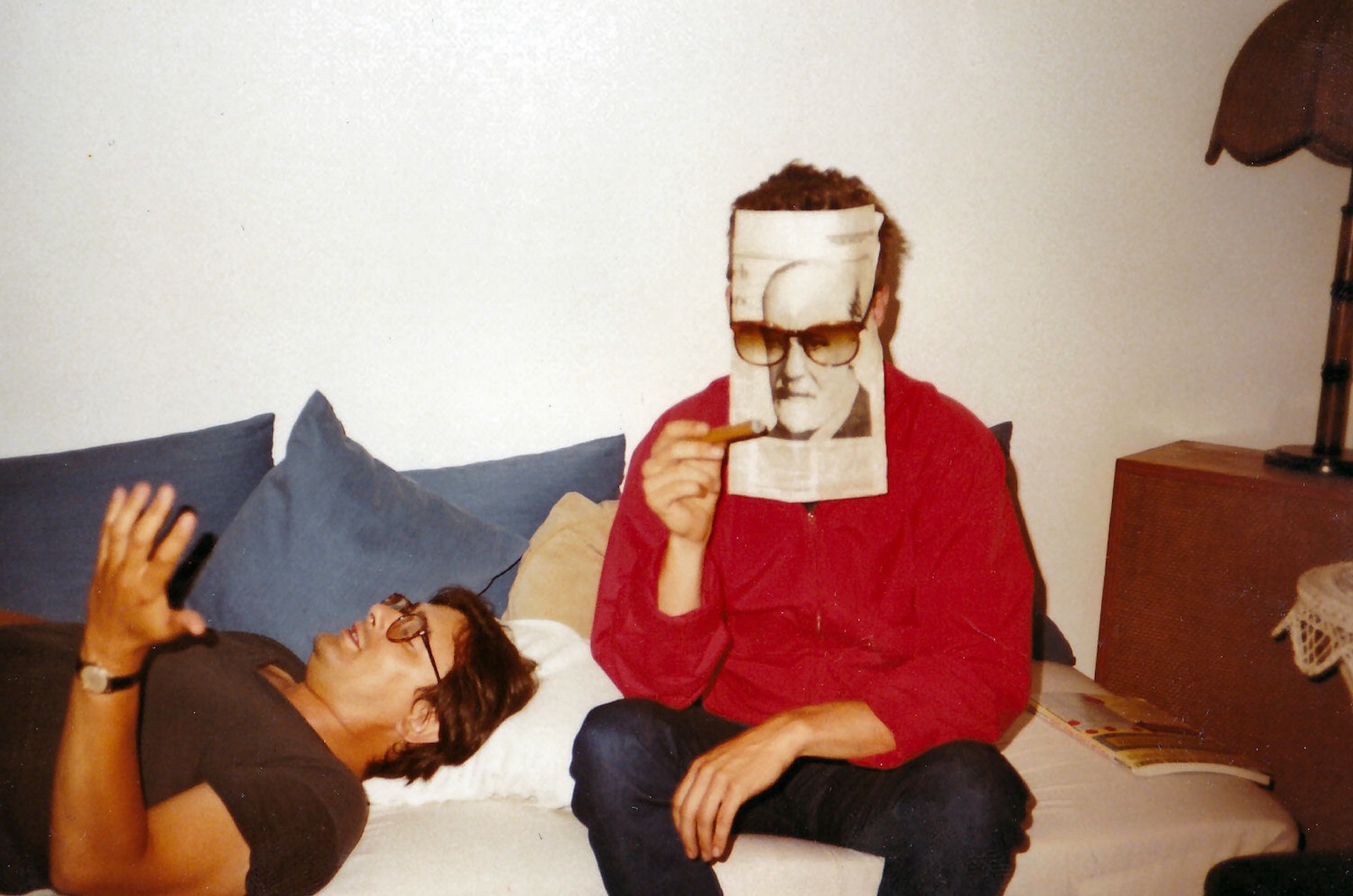
David Wisdom and Rodney Graham in 1979. Photo by Carole Goldsmith.
Indeed, behind the fastidiousness of Graham’s work are wit and spontaneity, plus a tumult of ideas, some of which never came to pass, like the castle in Belgium he talked about purchasing, largely because it seemed like a super cool place to hang with his friends. Other ideas, however, did emerge, such as 1997’s Vexation Island, perhaps Graham’s best-known piece, a 35-millimetre loop in which he’s repeatedly knocked unconscious by a falling coconut on a desert island. “I thought it was so funny,” Wisdom says. “He had decided, instead of doing smaller pieces, to do something grand and make a film in the Caribbean. And he actually went and did it. And it was very successful. It went to Venice Biennale.”

UJ3RK5 in the studio.
Vexation Island was a sensation, Wisdom recalls, scrolling through images of the Rodney Graham Band playing a Halloween party at the Waldorf Hotel in 2010. “He was very unflappable. And cool. He never got stuck up. He was generous. He was slightly embarrassed by all the attention. He wasn’t interested in celebrity at all, being a celebrity, or hanging with celebrities. His friends were his old friends. In his later years, many of his friends were younger than him. Because he’s a young kinda guy.
“I miss him terribly,” he says finally. It’s haunting to scroll through one man’s record of another man’s life. I notice that Wisdom frequently refers to his friend in the present tense. In the work he left behind, in which he’s so often his own subject, maybe there’s comfort in the infinite loop of Rodney Graham’s presence.
All photos courtesy of David Wisdom. Read more from our Spring 2023 issue.

